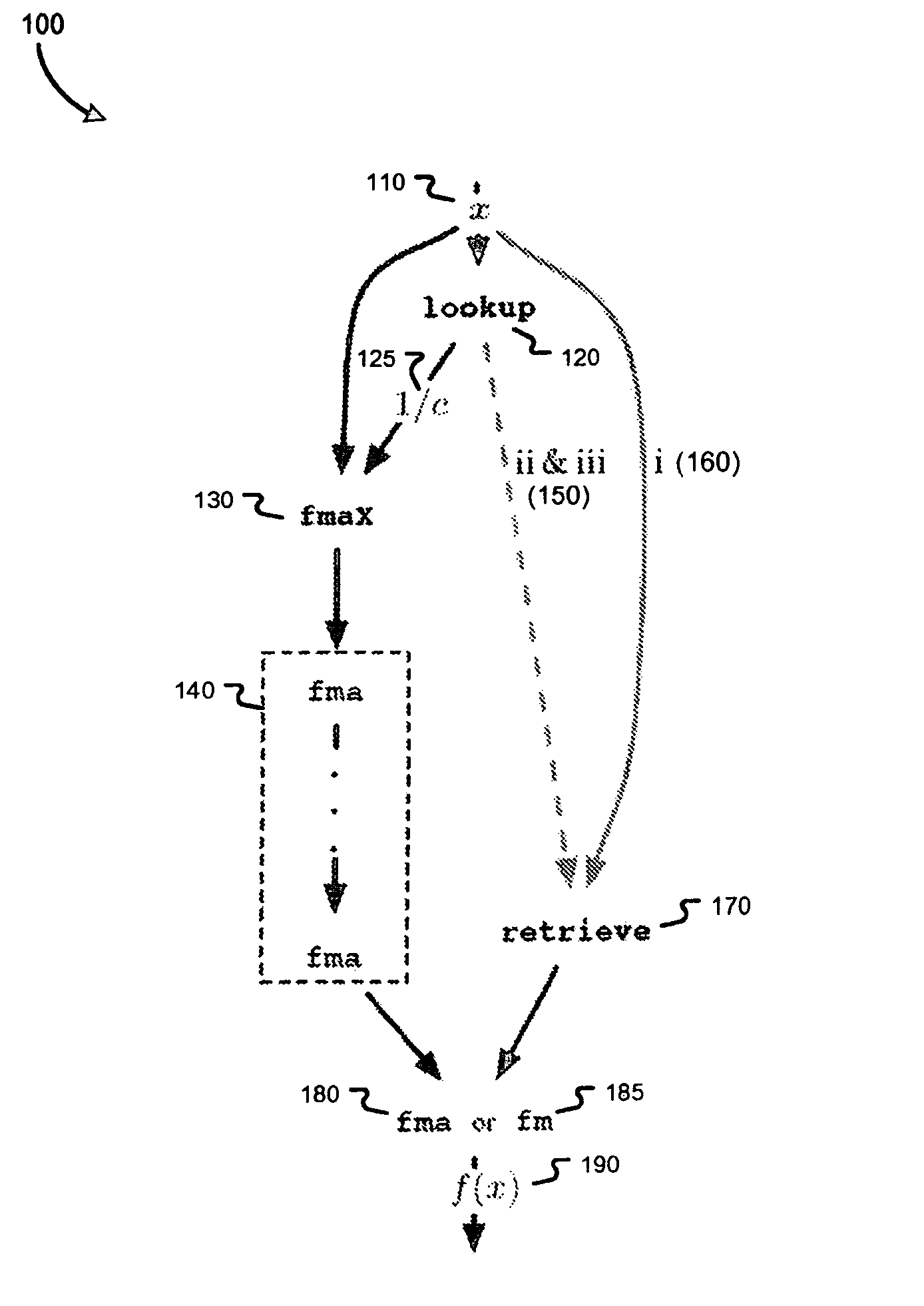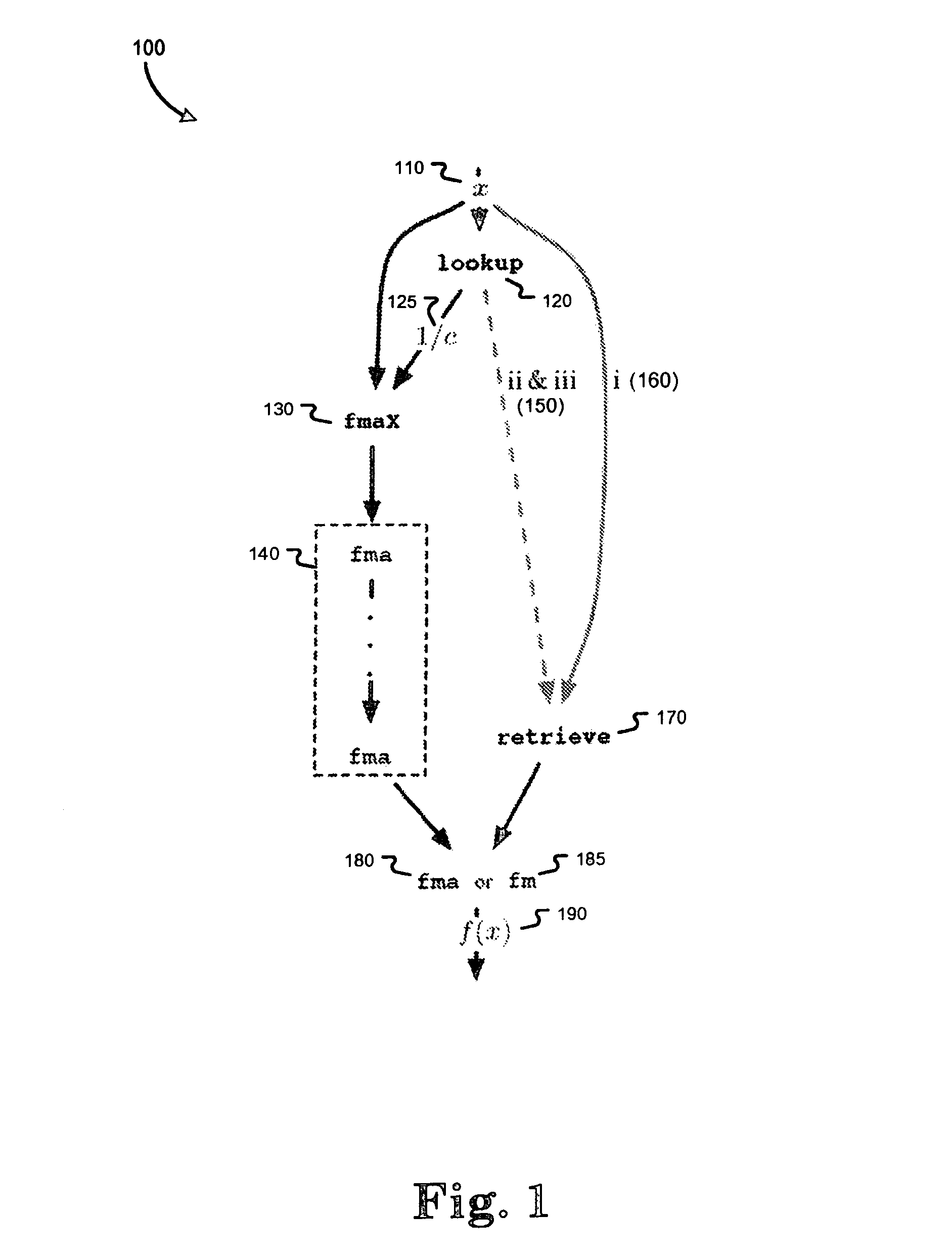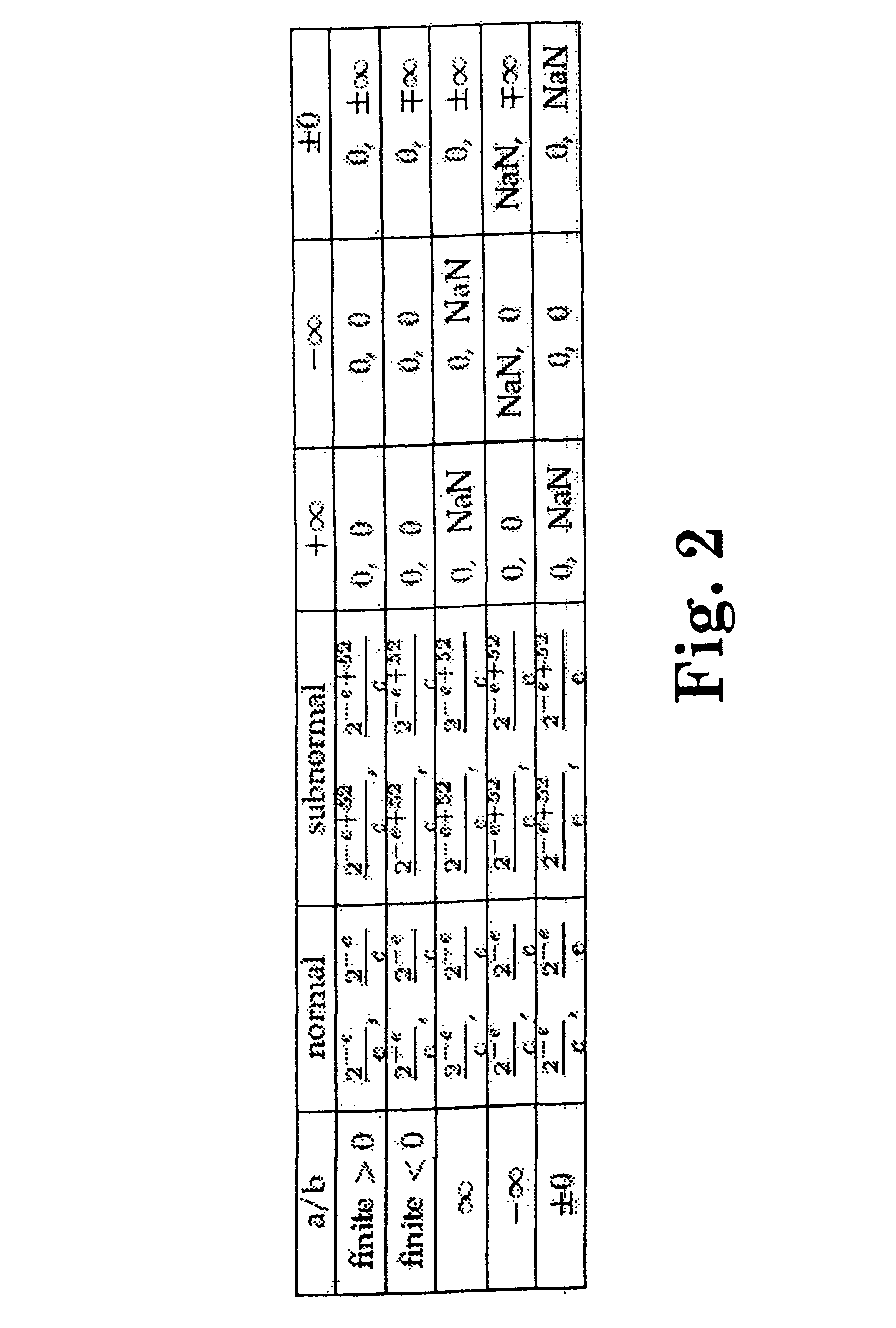Hardware instructions to accelerate table-driven mathematical computation of reciprocal square, cube, forth root and their reciprocal functions, and the evaluation of exponential and logarithmic families of functions
a technology of table-driven mathematical computation and hardware instruction, applied in computation using denominational number representation, multi-programming arrangement, instruments, etc., can solve the problem of reducing power consumption of applications calling these functions, and achieve the effect of reducing instruction and constant counts, and reducing the number of instructions
- Summary
- Abstract
- Description
- Claims
- Application Information
AI Technical Summary
Benefits of technology
Problems solved by technology
Method used
Image
Examples
Embodiment Construction
[0018]One aspect of the present invention provides a set of new floating-point instructions for implementation in a floating-point arithmetic unit. These instructions may be used to support a set of mathematical function computation algorithms. These instructions provide additional improvement in light of changes in physical processor design that render older implementations ineffective. On the algorithm side, even basic arithmetic computation may be improved—notably by eliminating variable execution times for subnormals. The advantages of the presently disclosed hardware instructions may therefore be extended to computation of a number of important elementary functions.
[0019]Driven by hardware implementation, the advent of software pipelining and shortening of pipelining stages favored iterative algorithms. The long-running trend towards parallelism has engendered a search for shared execution units, and in a more general sense, a focus on throughput rather than low latency. This t...
PUM
 Login to View More
Login to View More Abstract
Description
Claims
Application Information
 Login to View More
Login to View More - R&D
- Intellectual Property
- Life Sciences
- Materials
- Tech Scout
- Unparalleled Data Quality
- Higher Quality Content
- 60% Fewer Hallucinations
Browse by: Latest US Patents, China's latest patents, Technical Efficacy Thesaurus, Application Domain, Technology Topic, Popular Technical Reports.
© 2025 PatSnap. All rights reserved.Legal|Privacy policy|Modern Slavery Act Transparency Statement|Sitemap|About US| Contact US: help@patsnap.com



